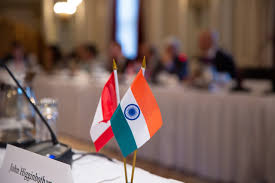The Story of Human Intervention with nature is not a global conflict or some war or controversy playing out on a world stage; it is a story of surviving and letting this atmosphere prevail for humans and all other living things. For dumping E-waste is developing countries a new dustbin?
When the so-called world leaders talk about Global Warming curbing Climate Change and many other beloved words for mother nature, they forget how developed nations are trashing the developing and undeveloped worlds with their E-Waste.
India is one of such nations been used as a dustbin by this developed world. It’s not a new trend coming into the picture, but it has a long back story too.
Also, it’s fascinating to learn how broken electronics such as computers, laptops, smartphones, television, refrigerators, and other available electronics products end up in nations like India.
In conclusion, we will get only two outcomes: how developed nations have used developing countries as their trash can and how adversely it affects the local people of the developing society and their environment.

Around the world, 90% of e-waste is traded or dumped illegally. And every year, this 90% of trash ends up in nations like India and the rest of Asia, says the United Nations Report in 2015, and as per the trend and tremendous rise for the demand of electronics will have a different picture may be worse than it was in 2015.
The report of the World Economic Forum report from 2019 says that Western Europe tops this list.
This report highlights how illegally this e-waster is imported to the Developed World through illegal channels to avoid authorities’ detection and how the developed world moves its e-waste operations undocumented.
How dangerous is this for the local people?
Today’s electronics product contains rare and potentially hazardous materials. Using smartphones, it has rare metals like Gold, Iron, Copper, and other elements like lead, cobalt, mercury, silicon, and others.
The irony is most of these elements can be extracted and can be reused.
But it doesn’t happen around the world; this massive waste, including rare elements, end in massive landfills, which in turn converts to toxic dumps, gradually spreading diseases and making people sick.

The people in capital Accra living near dumps or landfills burn this waste to salvage copper and other metals.
To see its effect, Ghana once seen a considerable number of locals coughing blood, which continues today.
The report says that locals have complained of chest pains, headaches and it’s clear why people are inhaling toxic smoke and, maybe unknowingly, the tiny particles are entering their body through the mouth.
The same happens in India.
A lot of illegal waste ending up in India ends up in informal waste pickers in India.
The locals living nearby landfills or the workers in the business have experienced decreased lung function, skin disorders, and gastric diseases that cause cramps and liver damage.
Is India defence less against e-waste?
So, the question arises India is incapable of restricting and taking strict actions against the west dumping their waste in India.
India placed a law in 2011 where only authorized dismantlers and recyclers are allowed to collect electronic waste. This law was strengthened later in 2016 by imposing a complete ban on importing e-waste to tackle this problem.
Still, it seems the illegal transfer of e-waste remains untouched, and the west, instead of building a rigid system they are transferring their waste.
Only 35% of waste in Europe ends up in the official recycling collections system rest either get dumped in landfills, Ocean or ends up in countries like India.
India “third-largest” producer of e-waste

In India, the crisis is two-fold one problem is dumping from the west, and the second is India’s e-waste.
As per the report of the UN on e-waste, now India is the third-largest producer of electronic waste in the world.
There is a greater need for India to handle this waste and dispose of them properly. Otherwise, it will have significant ramifications not just for humans or locals but also for the environment.
What do you as a consumer do with your old gadgets?
1. Do you put them in place and forget about it?
2. Do you dump them at the nearest garbage disposal?
3. Do you sell them off?
4. Do you recycle it?
So, wondering if a consumer doesn’t do their part, they are most likely to end up in massive landfills. The number of such landfills is increasing day by day, and seeing the trends, it will only keep growing.
According to a UN report, India is now the third biggest e-waste generator in the world, just after the United States and China.

Indians generate more than three million metric tons of e-waste every year, and e-waste is an inevitable gadget. They have penetrated every aspect of human life, and Indians are buying more and more of them; the pandemic had accelerated their demand.
During the first quarter of 2021, smartphone shipments to India grew by 23%; more than 38 million units were sold over 500 million now use a smartphone in India by the end of 2020.
Nearly eight million laptops were shipped to India. Indians are buying more products which result in more waste.

As per the data given by the government of India, 1 million tons of e-waste was generated in 2020. An increase of more than 31% when compared with the number from last year. And most importantly, this does not count the waste handled and ends up in the informal sector’s hands.
In India, around 95% of e-waste is being handled by the informal sector, so this crisis is much bigger than it looks.
Also Read-In response to the top court, the US House approves a law permitting same-sex marriages.













